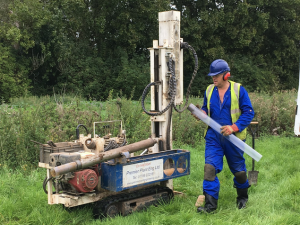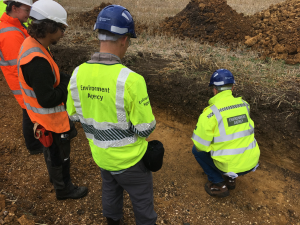Archaeology surveys: preparing for the next phase
Senior Archaeologist Catherine Charman discusses the archaeological survey work that is part of the River Thames Scheme and what it has revealed so far:
Where are you digging/investigating?
We will soon be doing geophysical and geoarchaeological surveys near Chertsey and Desborough Island. In recent years we have carried out trial trenching north of Chertsey and at Desborough Island.
What have you found during previous digs in the area?
We have discovered flint tools, evidence of Bronze Age activity, an Iron Age post alignment/field boundary and a medieval fish weir.
Why are archaeological digs part of the River Thames Scheme?
We need to know what archaeology is present before we carry out any construction work. Once we know evidence is there we can plan to recover as much information about the past and how our ancestors lived as we can.
What kind of tools/technology are used?
The geophysics we are using is called magnetometry. Different soils and iron objects have a different magnetism which the equipment we use can detect. Specialists can interpret the results and help us identify what might be below the ground without us actually digging.
Geoarchaeology can use either high-tech equipment to take boreholes or a lower-tech hand auger [a kind of hand-held drill] to take soil cores.
When excavating, we use a range of equipment from hand shovels and trowels through to mini-diggers and JCBs. For recording we can use everything from paper drawings through to laser scanning. We use global positioning systems (GPS) to locate everything and drones are becoming increasingly useful for securing aerial views.
What do you do when you find something?
When we find archaeology it is recorded using photos, drawings, GPS and written records. Artefacts are collected and taken away to be cleaned and examined by a finds specialist.
Environmental samples are taken to identify ecofacts (such as charcoal, seeds, pollen, snail shells, insect fragments and tiny bones) that can tell us about the environment in which our ancestors lived and how it changed over time. All this information can then be brought together to help us tell a story about how people lived in the past.

